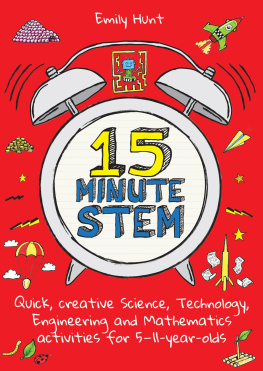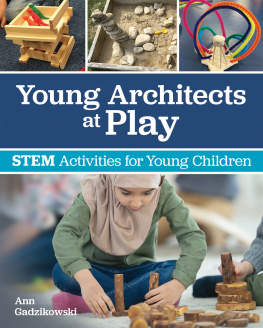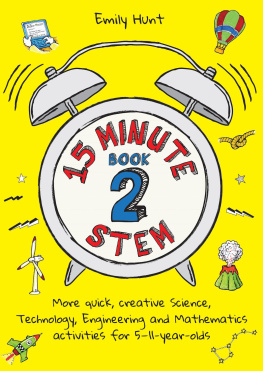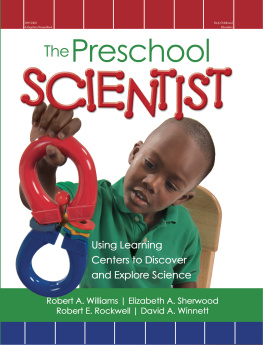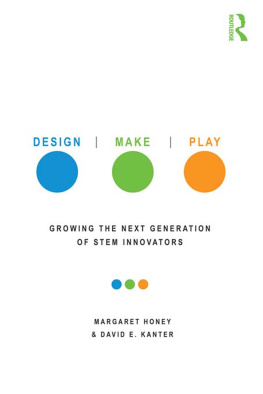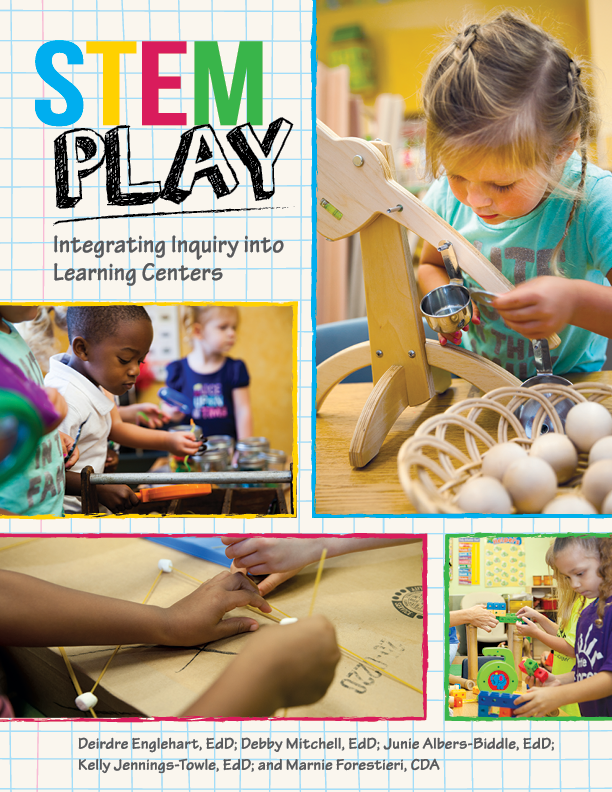Contents
Chapter 1
Enhancing the Focus on STEM
Chapter 2
Art Center
Chapter 3
Block Center
Chapter 4
Dramatic Play Center
Chapter 5
Literacy Center
Literacy Center Activities Using the Theme
of Castles, Fairies, and Bears, Oh My!
Chapter 6
Mathematics Center
Mathematics Center Activities Using the Theme
of Learning about Myself and My World
Chapter 7
Music and Movement Center
Chapter 8
Science Center
Chapter 9
Assessing and Enhancing Childrens Thinking and Understanding in Learning Centers
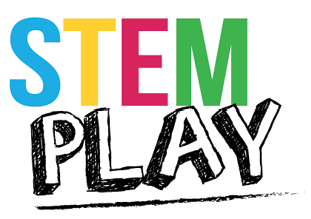
Integrating Inquiry into
Learning Centers
Deirdre Englehart, EdD; Debby Mitchell, EdD;
Junie Albers-Biddle, EdD; Kelly Jennings-Towle, EdD;
and Marnie Forestieri, CDA
Copyright
2016 Deirdre Englehart, Debby Mitchell, Junie Albers-Biddle, Kelly Jennings-Towle,
and Marnie Forestieri
Published by Gryphon House, Inc.
P. O. Box 10, Lewisville, NC 27023
800.638.0928; 877.638.7576 (fax)
Visit us on the web at www.gryphonhouse.com.
All rights reserved. No part of this publication may be reproduced or transmitted in any form or by any means, electronic or technical, including photocopy, recording, or any information storage or retrieval system, without prior written permission of the publisher. Printed in the United States. Every effort has been made to locate copyright and permission information.
Photographs courtesy of Abel Gomez, unless otherwise noted.
Yoga pose photos courtesy of Deirdre Englehart.
Photos on pages 14 and 25 used under license from Shutterstock.com.
Bulk Purchase
Gryphon House books are available for special premiums and sales promotions as well as for fund-raising use. Special editions or book excerpts also can be created to specifications. For details, call 800.638.0928.
Disclaimer
Gryphon House, Inc., cannot be held responsible for damage, mishap, or injury incurred during the use of or because of activities in this book. Appropriate and reasonable caution and adult supervision of children involved in activities and corresponding to the age and capability of each child involved are recommended at all times. Do not leave children unattended at any time. Observe safety and caution at all times.
Library of Congress Cataloging-in-Publication Data
The Cataloging-in-Publication Data is registered with the Library of Congress for 978-0-87659-402-5.
Acknowledgments
Our thanks to the Orlando Science Center and the parents and staff members at Amazing Explorers Academy in Oviedo, Florida.
Introduction
Play is often talked about as if it were a relief from serious learning. But for children play is serious learning. Play is really the work of childhood.
Fred Rogers
Play has been established as a major avenue of learning for young children. Learning centers have provided opportunities for play and learning at the preschool level for years. Integrated learning centers make sense for young children because the concept aligns with the way children learn. Young children dont separate content into different areas; they naturally see and integrate learning in a holistic way as they play.
The idea of integrating science, technology, engineering, and math (STEM) into learning centers is relatively new. Although literacy integration has become more common by providing books and writing materials within learning centers, focusing on STEM in different centers is a fresh approach. Because science is an avenue for children to learn about their world, it fits naturally with learning centers. Young childrens learning reflects a cycle that begins with an awareness of ideas and materials, moves to exploration with materials, then progresses as children develop concepts. This cycle of learning that occurs through explorations, inquiry, and building of knowledge uses similar processes as the engineering method and scientific inquiry. The initial explorations provide children with the experiences to build new ideas through these methods. Children need time and interactions to facilitate their learning and play. Learning centers provide a perfect platform for these experiences.
Integration of STEM in the early years exposes young children to a problem-solving approach to learning that aligns with their own curiosity. The integration of STEM in the preschool setting may spark an interest in and increase preparation in these fields in for future, which could lead to interest in STEM careers.
How to Use This Book
Learning centers are the cornerstone of the early childhood classroom. Children love choices with the opportunity to pursue their own interests and ideas while playing in centers. Learning for young children is integrated and includes different skills and content areas. This book is designed to bring learning centers to the next level through integration of content, and to be a guide for teachers to think more broadly about childrens learning options.
Each chapter focuses on a specific learning center and includes general ideas to implement various content areas within the center. These ideas can help children to extend and expand learning that naturally develops while playing with materials commonly found in the center. The second portion of each chapter focuses on a theme. This section provides ideas and activities to integrate in the learning center that are aligned with commonly used themes, such as the zoo or a restaurant.
When using this book, begin with one center, one activity, or a theme. Some lessons build on each other, but most can be used at any time to foster an integrated approach to learning. It is helpful to take time to introduce topics before children begin the center period, to interact with them during play to promote further thinking and involvement during centers, and to encourage children to share experiences at the end of centers.
Ways to Use Learning Centers
Because the goal of many of these activities is to support childrens autonomy in learning centers, you may find it helpful to introduce the activities during group time, prior to releasing children to play. This format allows the teacher to reinforce specific activities that can be accomplished during centers time. Some activities will require that the teacher be more focused or involved with children at one learning center, but the overall point is to encourage children to pursue various opportunities for integrated learning during play. The following strategies can help achieve this goal.
Whole group introduction: Select one learning center and introduce activities that are available. Teachers may find it works well to introduce one related activity for one learning center per day using the directions provided. This will help create excitement about specific learning centers and will allow the teacher to maintain a focus on that learning center for the day. T he activities at specific learning centers will be available for more than one day for students who are unable to participate on the first day. The teacher also can remind students of other special activities that were previously introduced and may be ongoing in the learning centers.
Learning center time: Release children to the learning centers. The teachers role may be to assist, question, interact, or observe children during play. Although specific lessons are the focus, the teacher may want to dedicate more time to that learning center while still being aware of all students in the room.


